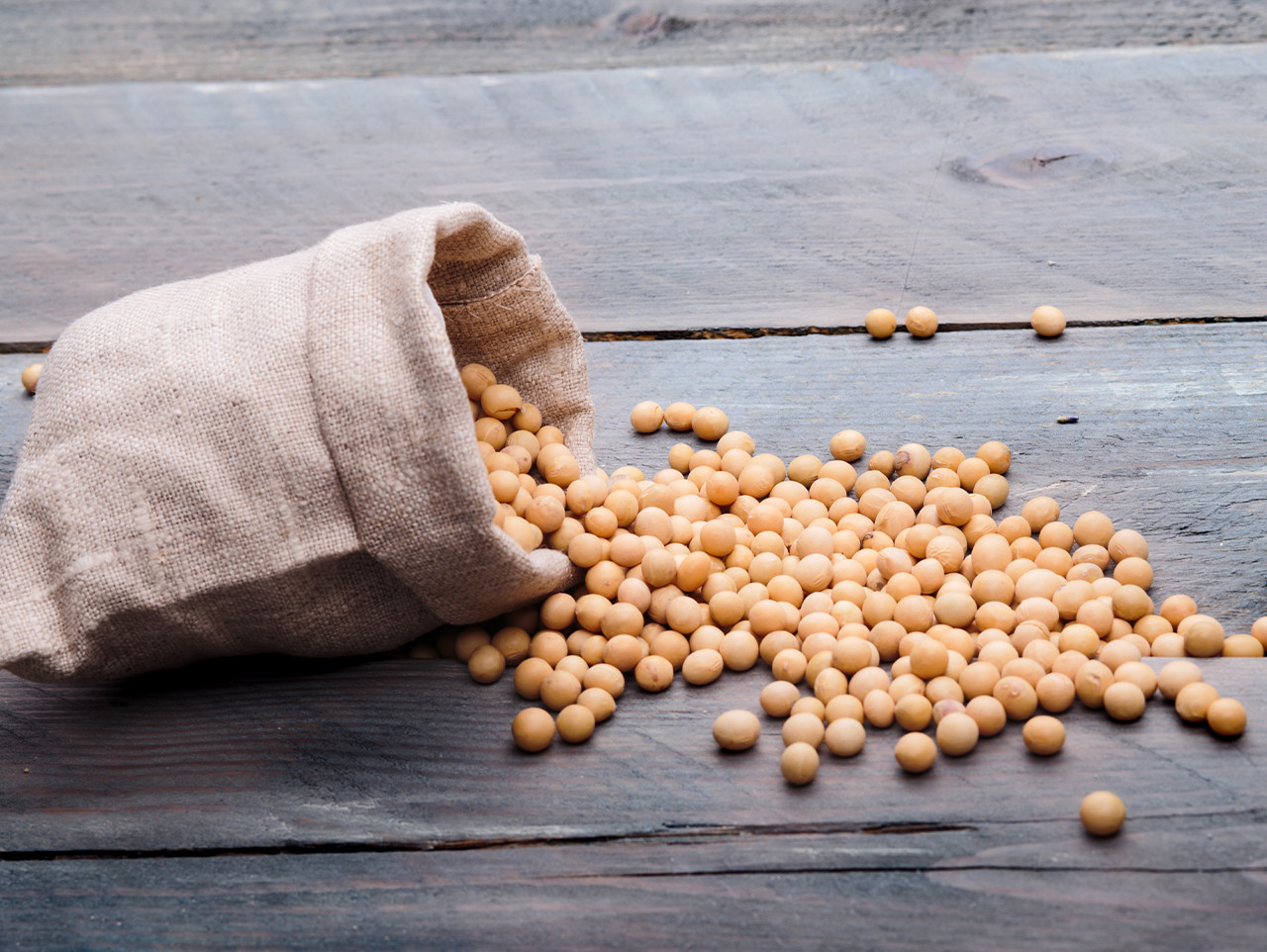We're currently searching through more than 4,000 articles, just a moment's patience...
We're currently searching through more than 4,000 articles, just a moment's patience...

The production industry uses a standard method to extract proteins from soybeans. PhD student Yu Peng from Wageningen University altered this industrial process, making vegetarian meat juicier and healthier.
Soy protein is extracted from soy meal. That is a floury substance that remains after the oil has been extracted from the soybeans. That soy meal consists of proteins, sugars and other carbohydrates such as cellulose. The industry purifies the proteins by mixing them with water. Proteins and sugars dissolve, the remaining substances don’t. The following step in the process is to add acids that alter the protein’s properties. This causes the proteins to sink to the bottom while the sugars remain dissolved. Thus, they are easily separated.
The doctoral candidate added a step at the end of this industrial process to ensure more juiciness. She heated the purified proteins to seventy degrees Celsius. This alters the properties, enabling the substance to hold more water, like a sponge. Less water was ejected during the baking of vegetarian meat. ‘This heating stage is a promising way to add more meat-properties to meat substitutes’, Peng states.
In the standard process, sodium is added to make the proteins PH-neutral and improve their solubility in water. Peng discovered the same result could be achieved by adding calcium hydroxide, which increases the calcium content of the soy protein.
Source: Wageningen Resource
Vakblad Voedingsindustrie is a project of b2b Communications BV.
© COPYRIGHT 2025 VOEDINGSINDUSTRIE | ALLE RECHTEN VOORBEHOUDEN
Powered by Wallbrink Crossmedia © 2025
Een abonnement kost € 80,- exclusief 9% BTW per jaar.

We work in accordance with the privacy legislation. After your registration you will receive an e-mail with a confirmation link. Only after you have clicked on this link will you be registered as a recipient of the newsletter. If you can't find the e-mail in your inbox, please also look at unsolicited e-mail.


Lorem ipsum dolor sit amet, consectetuer adipiscing elit. Aenean commodo ligula eget dolor. Aenean massa. Cum sociis natoque penatibus et magnis dis parturient montes, nascetur ridiculus mus. Donec quam felis, ultricies nec





